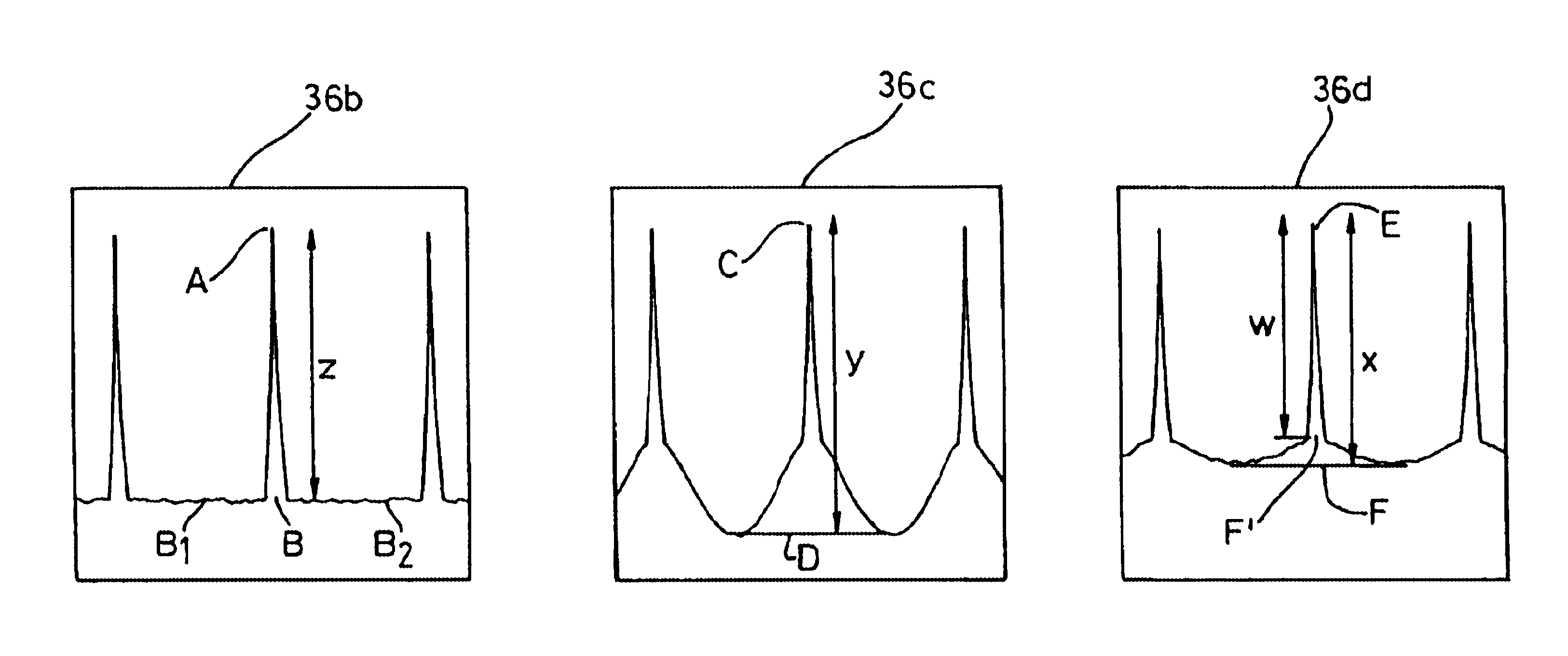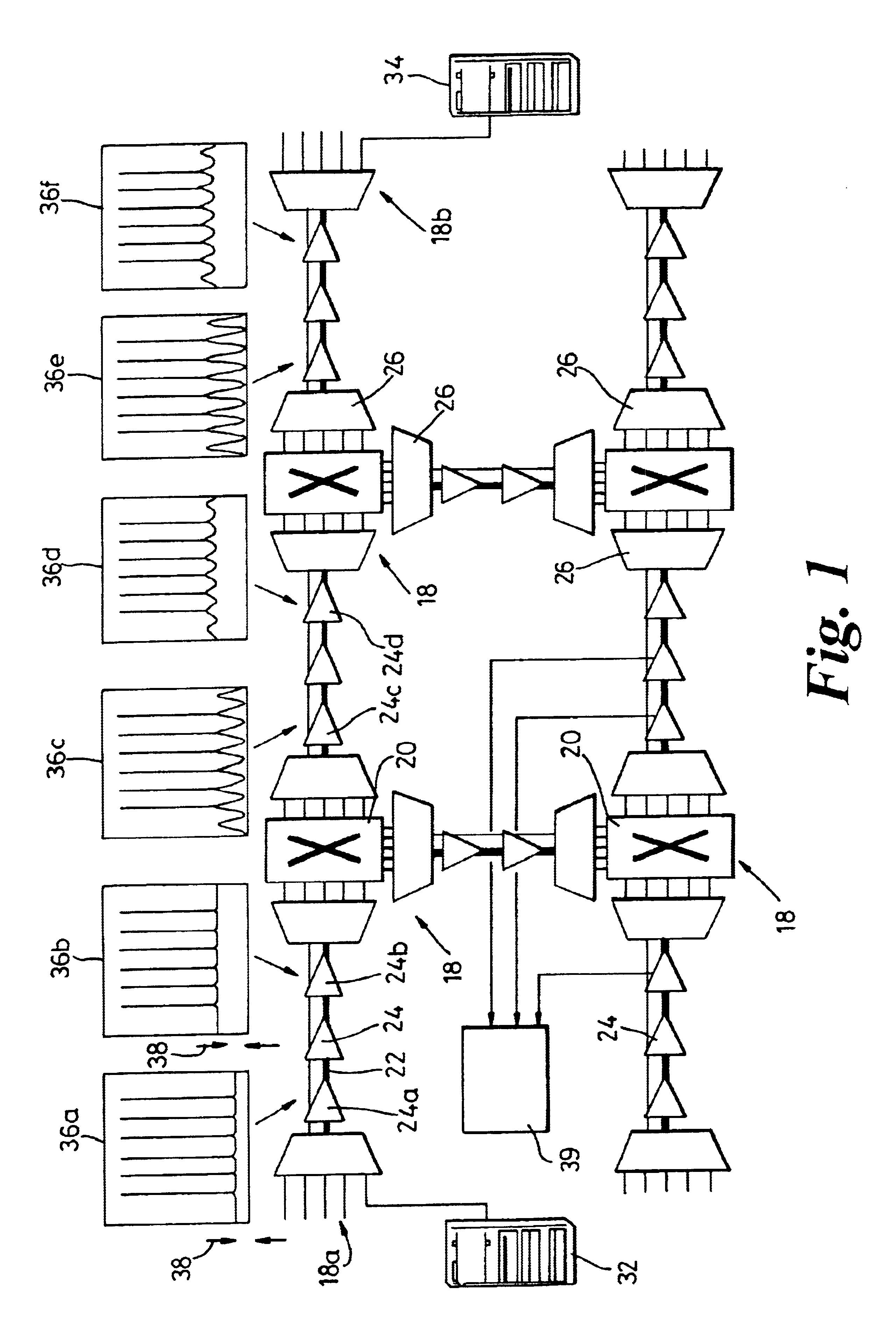Method and apparatus for measuring and estimating optical signal to noise ratio in photonic networks
a photonic network and optical signal technology, applied in the direction of wavelength-division multiplex system, transmission monitoring, multiplex communication, etc., can solve the problem of complex and less tolerant transmission system, no longer simple operation for determining the cause of a distortion in the received signal
- Summary
- Abstract
- Description
- Claims
- Application Information
AI Technical Summary
Benefits of technology
Problems solved by technology
Method used
Image
Examples
Embodiment Construction
[0042]FIG. 1 shows a WDM optical communications network comprising a plurality of interconnected nodes 18, each node comprising an optical switching arrangement 20 for performing routing of signals across the network. The nodes are connected together by optical fibers 22 along which optical amplifiers 24 are placed. The fibers 22 carry WDM optical signals, and each node comprises multiplexing / demultiplexing units 26 which provide the channels of the WDM system on individual fibers to the switching arrangement 20. The switching arrangement may switch individual channels or else bands of channels.
[0043]The network enables equipment 32 at a source node 18a (not shown in full) to communicate with equipment 34 at a destination node 18b (not shown in full). The equipment 32, 34 is any device which provides optical signals for transmission over the network or which is provided for receiving signals from the network.
[0044]Each node 18 may be able to perform a regeneration function for some ...
PUM
 Login to View More
Login to View More Abstract
Description
Claims
Application Information
 Login to View More
Login to View More - R&D
- Intellectual Property
- Life Sciences
- Materials
- Tech Scout
- Unparalleled Data Quality
- Higher Quality Content
- 60% Fewer Hallucinations
Browse by: Latest US Patents, China's latest patents, Technical Efficacy Thesaurus, Application Domain, Technology Topic, Popular Technical Reports.
© 2025 PatSnap. All rights reserved.Legal|Privacy policy|Modern Slavery Act Transparency Statement|Sitemap|About US| Contact US: help@patsnap.com



